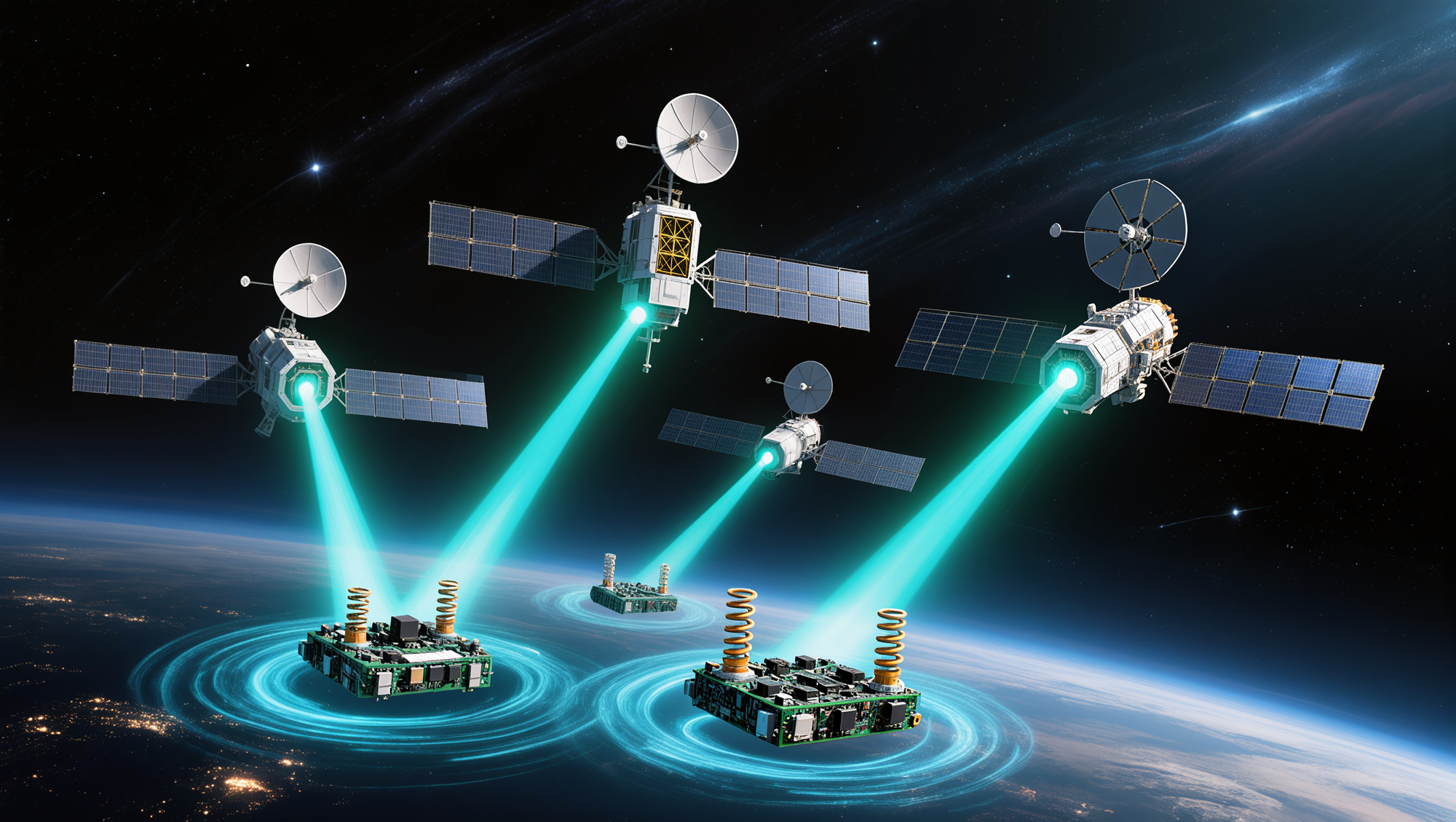The Growing Threat in the Flight Deck
Global Navigation Satellite Systems (GNSS) sit at the heart of Required Navigation Performance (RNP) procedures, yet localized interference events have skyrocketed—up 5× since 2023 according to recent industry reporting .
- In July 2024 the European Union Aviation Safety Agency (EASA) updated Safety Information Bulletin 2022-02R3, citing a “marked increase” in jamming and spoofing across the continent .
- Three Finnish airports re-installed Distance-Measuring Equipment (DME) last autumn after repeated GPS outages near the Russian border
Operational Pain Points for Airlines
- Route deviations & fuel burn: Wide-body crews have had to abandon optimal RNP approaches and revert to ground-based nav aids.
- Instrument Landing System (ILS) fallback limitations: Many regional strips have already decommissioned ILS to cut costs, leaving them exposed.
- Regulatory headwinds: EASA and IATA now urge operators to adopt layered PNT strategies and report incidents within 72 hours
Enter Iridium STL—A Layered PNT Boost
The Iridium Satellite Time & Location (STL) service broadcasts encrypted timing and coarse-position messages on the same robust L-band paging channels that reach polar latitudes and oceanic airspace . Because STL is 20-30 dB stronger at the antenna than GPS, low-power jammers that cripple GNSS barely register against it.
Iridium’s 2025 partnerships with avionics value-added manufacturers aim to embed STL receivers alongside existing satcom hardware, giving pilots a seamless fallback when GNSS flags an integrity alert
How STL Works in the Cockpit
|
STL Component |
Function |
Resilience Benefit |
|---|---|---|
|
Encrypted L-band burst |
Delivers time pulses & ephemeris over 1 kb/s paging channel |
Resistant to low-cost jammers |
|
Cross-linked mesh |
Each satellite relays data across the constellation |
No single-satellite dependency |
|
Physical-layer authentication |
Differs per satellite & epoch |
Spoof-proof without heavy crypto |
|
Software receiver module |
Firmware update to many satcom terminals |
Minimal hardware retrofit |
Iridium cemented the STL roadmap by acquiring Satelles, the original STL developer, in 2024 —accelerating integration across aviation, maritime and critical-infrastructure markets.
Benefits for Airlines & ANSPs
- Continuity of Operations: Maintains RNP and ADS-B Out when GNSS drops.
- Reg-Ready: Aligns with emerging FAA and EASA guidance on alternative PNT layers.
- Hardware-Light: Uses existing L-band antennas; only an STL receiver card or firmware mod is required.
- Cyber-Hardening: Broadcast keys rotate rapidly, deterring replay or meaconing attacks.
Implementation Checklist
- Receiver Upgrade Path – Confirm ARINC 741/781 satcom box compatibility.
- Certification & Testing – Conduct HIRF and DO-160 spurious-emission checks.
- Ops Procedure Updates – Add STL integrity annunciations to the MEL and QRH.
- Training – Brief flight crews on dual-source PNT alert logic.
The spike in GNSS interference is pushing regulators and operators toward a layered PNT architecture. Iridium STL offers an immediately deployable, space-based layer that complements GPS, reduces flight disruptions, and future-proofs cockpits against electronic warfare. Airlines that start certifying STL today will be the first to reap cost, safety, and schedule advantages when the next jamming hotspot appears.

Under-the-Hood: STL Security Architecture & Engineer-Grade Use-Cases
If GPS is “open broadcast,” Iridium STL is a closed, beam-locked conversation with cryptographic ID badges on every burst.
Multi-Layer Defence Stack
|
Layer |
Mechanism |
Why It Matters |
|---|---|---|
|
Physical-layer power & geometry |
• Down-link ∼30 dB (1 000×) stronger than GPS• 66 cross-linked LEO sats form 48 dynamically steered spot-beams 440 km wide |
Overwhelms low-cost L-band noise sources; beam overlap creates location-specific “fingerprints” that a remote spoofing rig cannot replicate. |
|
Beam-coded entropy |
Every 1 s burst is spread with a pseudo-random sequence unique to that beam/epoch; codes rotate continuously as satellites hand off. |
Receiver can prove it is inside the expected overlap region—core to STL’s “proof-of-location” model. |
|
Message framing & FEC |
Convolutional + Reed-Solomon FEC → <10-5 BER at –160 dBm; Doppler pre-compensation ±40 kHz. |
Lets the cryptographic layer ride through heavy multipath or partial jamming. |
|
Cryptographic authentication |
• AES-256-GCM on nav/time payloads• 256-bit beam session key derived from a root key + satellite ephemeris + GPS-time epoch• Ephemeral MAC per burst (<1 s validity) |
Even if an attacker records and replays a burst, the MAC fails outside its micro-window and outside its originating beam cone. |
|
Server-side attestation |
Receivers optionally send compressed observables (PRN, doppler, SNR) to Satelles verifier over any IP path; server issues a signed Trusted Location Token. |
Enables zero-trust architectures—backend VNFs or FAA SWIM nodes can validate that sensor data comes from a genuine, on-site source. |
Take-away for system designers: breaking STL requires simultaneously emulating high-power L-band bursts, matching beam overlap geometry, defeating AES-GCM, and doing so in <1 s—orders of magnitude harder than traditional GNSS spoofing.
Engineer-Grade Use-Cases
|
Domain |
Threat Model |
STL Security Benefit |
|---|---|---|
|
Commercial Aviation (RNP & ADS-B Out) |
Coordinated GNSS jamming near conflict zones forces aircraft off optimized approaches. |
STL delivers authenticated UTC and layer-2 time-tags for ADS-B even when GPS integrity flags. FAA trials with L3Harris show <50 ns holdover accuracy for ANSP clocks. |
|
5G ORAN Fronthaul |
GNSS spoofing knocks gNB + DU Phase Synch, causing cell muting. |
Stratum-0 STL disciplining meets ITU-T G.8272 PRTC-A (<50 ns), keeps eCPRI and sync-E inside budget without rooftop antennas. |
|
Financial-market colocation |
Intentional GPS time-shift aims to front-run timestamped orders. |
Exchange time services ingest STL + Rb mini-OCXO to maintain <100 ns traceability to UTC(NIST). |
|
Grid Synchrophasors (PMUs) |
Spoofed T1 PPS skews phase-angle measurement → false load-shedding. |
STL’s per-burst MAC and beam-locked entropy authenticate every micro-second tick; NERC CIP-013 aligns with this as an “alternate time source.” |
|
UAV BVLOS Control Links |
GNSS/Fusion sensor spoof diverts drone; L-band jammers sever C2. |
STL gives navigation sanity-checks and authenticated timestamps for secure telemetry over Iridium Certus/Ku fallback. |
Integration Checklist for Avionics & Ground Systems
- Crypto Seed Provisioning – Obtain OEM-specific root keys via Satelles HSM transfer (FIPS 140-3 Level-3).
- Burst-watchdog Logic – Reject time fixes if beam-ID & doppler histogram deviate >3σ from ephemeris table.
- Dual-Source Trust Engine – Feed GPS & STL into Kalman fusion; drop GNSS when σSTL–GNSS > 50 ns for >5 s.
- Token Validation API – Verify Trusted Location Token (ECDSA P-384) at mission server or ATS router.
Pro-tip: because STL uses the Iridium paging channel at 1626 MHz, most aircraft L-band satcom/ELT antennas already meet axial-ratio and gain specs—often a firmware-only retrofit.
Looking Ahead
Iridium’s 2026 roadmap brings forward-secure key rotation (Diffie-Hellman over curve25519 in-orbit), and an optional PQ-safe lattice signature add-on for timing clients in critical infrastructure. Expect advisory circulars from EASA and FAA formalizing STL as an “Alternative PNT Tier-1” source by 2027.
Final Word: STL—Strategic Upgrade or Nice-to-Have?
If your operations degrade, halt, or create liability when GNSS is disturbed—even for minutes—Iridium STL belongs on your roadmap. It drops seamlessly into existing L-band hardware, provides cryptographically authenticated time/location with >30 dB jam-margin over GPS, and satisfies the “alternate PNT” language now echoing through FAA, EASA, NERC, and 3GPP specifications.
Conversely, if your product or service can ride out a multi-hour GNSS outage without safety, regulatory, or SLA impact—think low-duty-cycle asset trackers or non-critical IoT sensors—STL may deliver diminishing returns relative to its licensing, certification, and integration overhead.
Rule of thumb:
- Safety-critical, high-availability, or compliance-bound systems → Adopt STL early; the risk curve already justifies the investment.
- Low-consequence, opportunistic PNT use-cases → Monitor the landscape; revisit STL when jamming incidents or customer requirements push availability targets tighter than GNSS alone can guarantee.
Either path, stay proactive: jamming statistics are climbing, regulators are watching, and layered PNT is rapidly shifting from best practice to baseline.
Choose your tier today—before interference makes the decision for you.






Comments